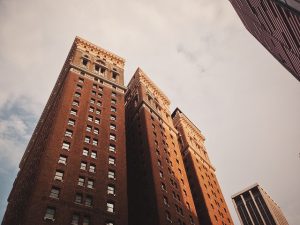Commercial Real Estate can be an attractive option for investors looking for a low-maintenance investment which can provide a higher return on investment than residential real estate.
However, there are some things you should know before you invest in Commercial Real Estate.
What makes Commercial Real Estate attractive?
For a real estate investor, there are several factors which make Commercial Real Estate a good investment.
 Commercial Investment Property can offer High Returns
Commercial Investment Property can offer High Returns
As I mentioned above, a key benefit of owning Commercial Real Estate is it generally offers a higher return on investment than other forms of investment property.
In the US, it’s not uncommon for Commercial Real Estate such as offices and shops, or Industrial Real Estate such as factories and warehouses to offer yields of 10% and often above.
This has made Commercial Real Estate an attractive alternative to inner city apartments (which often yield 1-2%), and other sorts of residential real estate (which rarely returns more than 10%).
Factors affecting Commercial Investment returns
In general terms, the value of a Commercial Investment Property relates to the value of the rent which is being paid by the tenant of the property, and the expected rental yield for an area.
For example – say you spotted a property in an area where commercial rental yields were at 10%, and the tenant of the property was paying $100,000 per year. In this example, you could expect that the property would be worth somewhere in the vicinity of $1,000,000.
(100,000 / 0.10 = $1,000,000)
However, there are some factors which can skew these figures.
Quality of Tenants
One example is if the property is rented to a government tenant, or a major corporation such as a bank or a fast food chain.
These sorts of commercial tenants are seen to be more valuable, reliable and secure to investors. As a result, investors are willing to take a lower rental yield because their risks are lower – and the property becomes worth more.
On the other hand, if a Commercial Property is vacant, its price drops significantly because there’s a higher risk that the investor won’t be able to find someone who wants to rent the property – so they need to factor in a higher rental yield in order to mitigate their risks.
Quality of Location
Another example of a factor which can skew the value of a commercial property is location.
You’ve heard the saying “Location, Location, Location” (or perhaps “Position, Position, Position”).
This is the mantra of many commercial real estate investors.
The location of a commercial property is prized, because retailers know that the more prominently the property is positioned, the more people will drive past their shop – and the more likely someone is going to buy from them.
As a result, tenants are willing to pay more for a property in a prime location.
HOWEVER – this does not necessarily mean that you receive a higher return on investment from property in prime locations.
You see, investors like property in good locations too – and they drive the prices up of prime commercial development sites, corner blocks on main roads and other prominent Commercial Property.
As a result, you may find commercial properties in good locations, with good tenants, don’t provide as high return on investment as commercial property in not-so-good locations with no-name (yet still reliable) tenants.